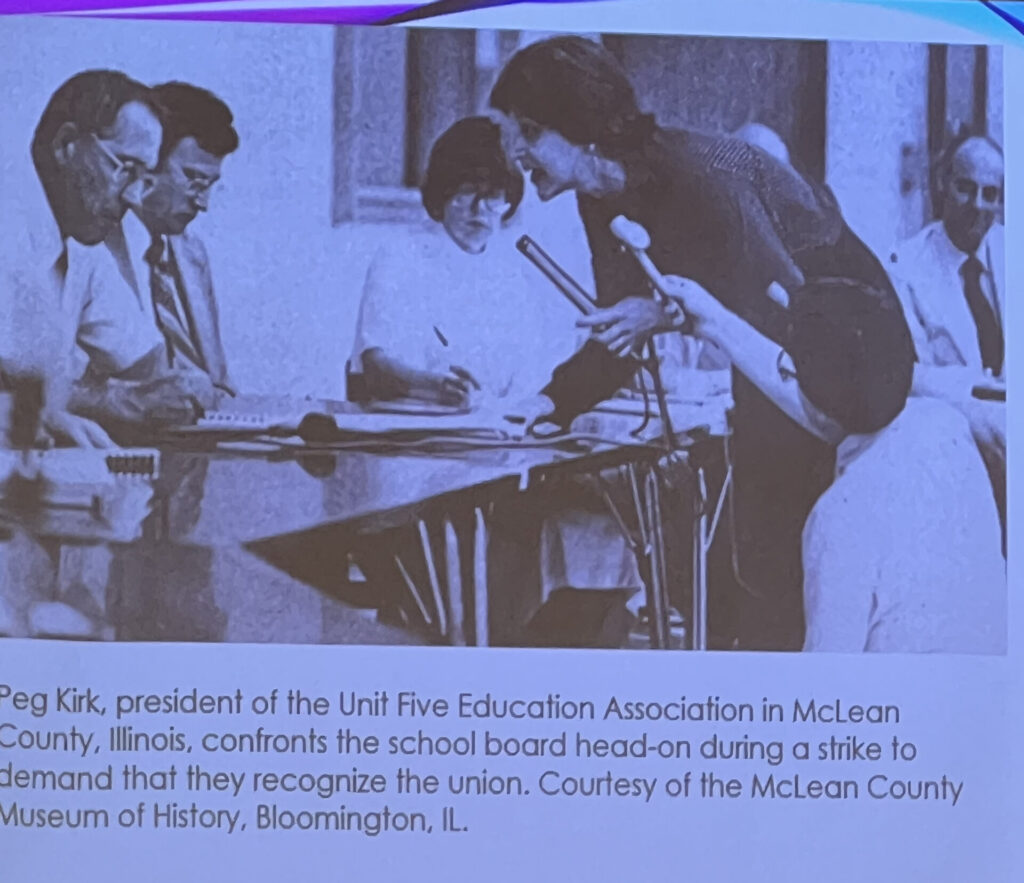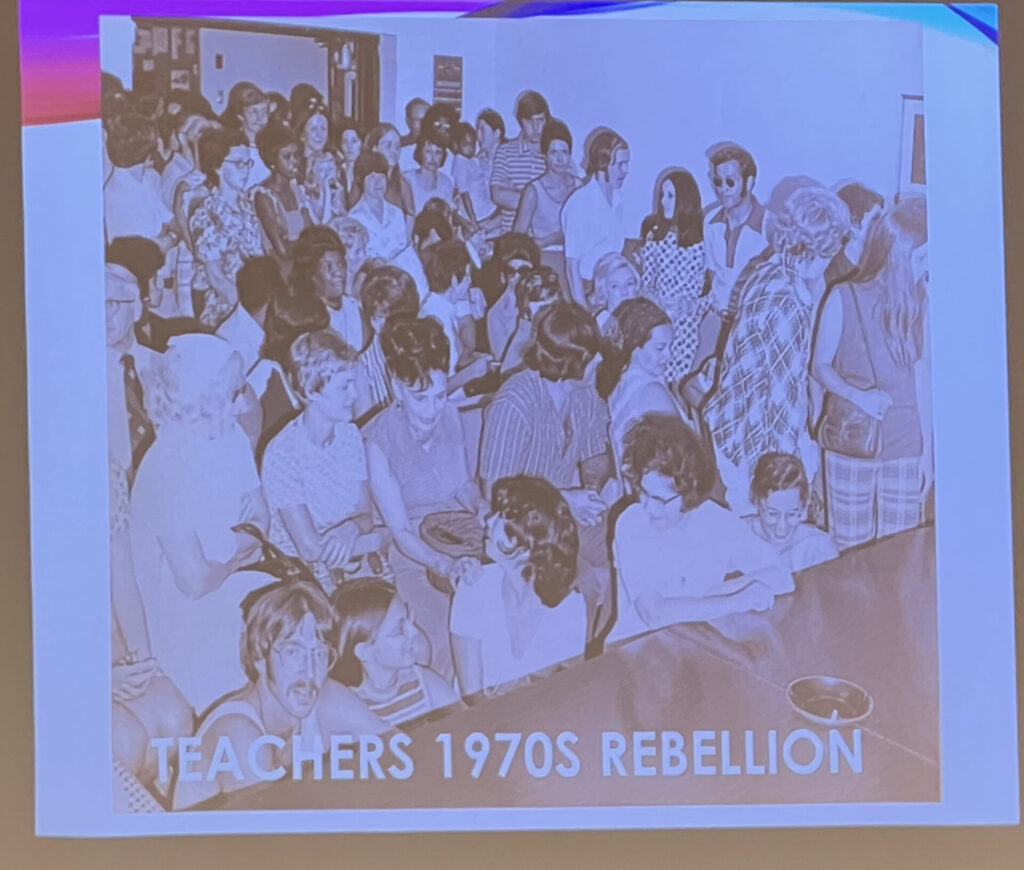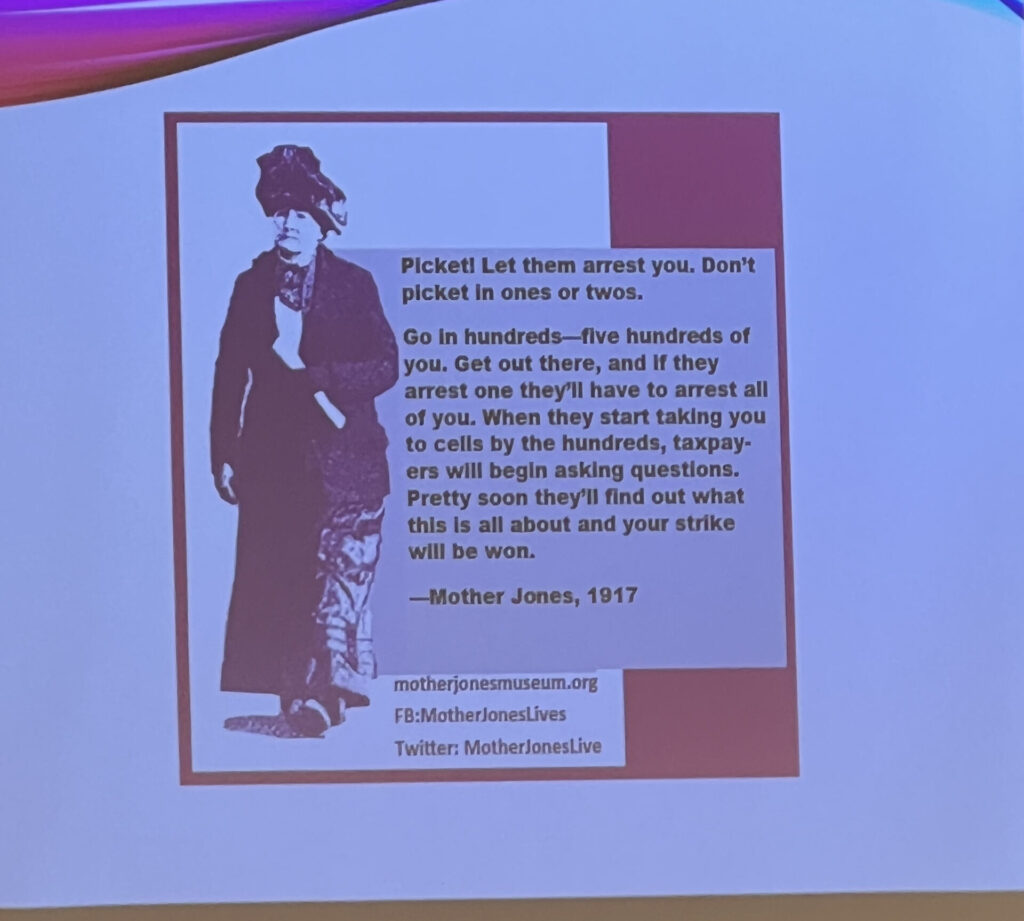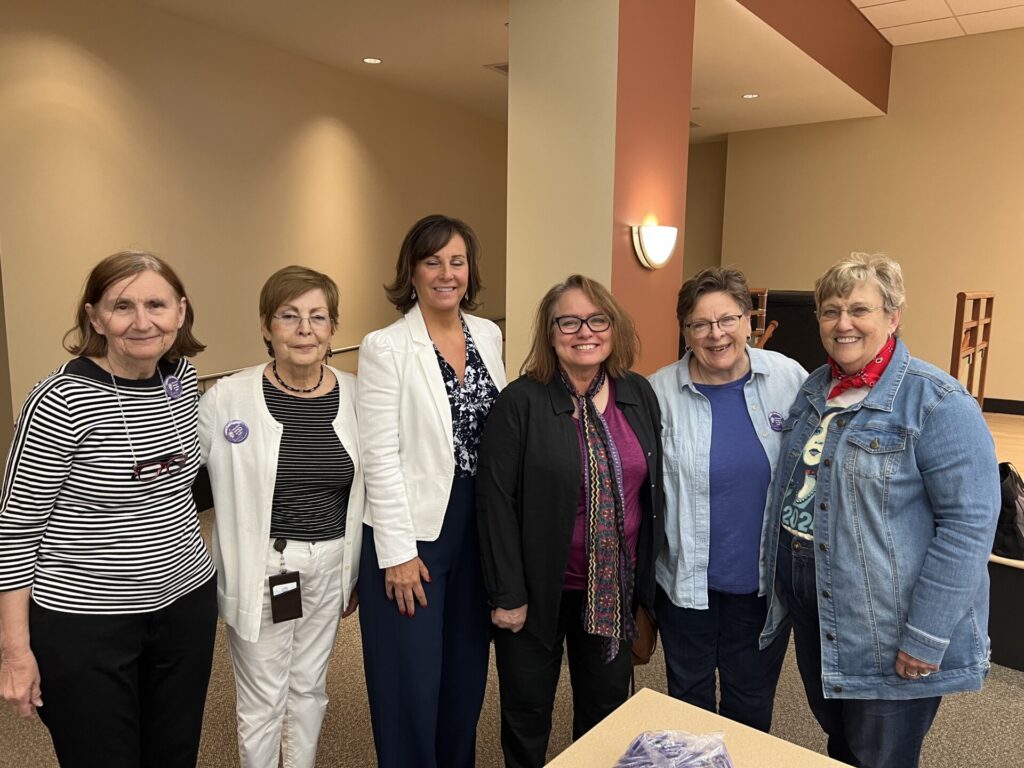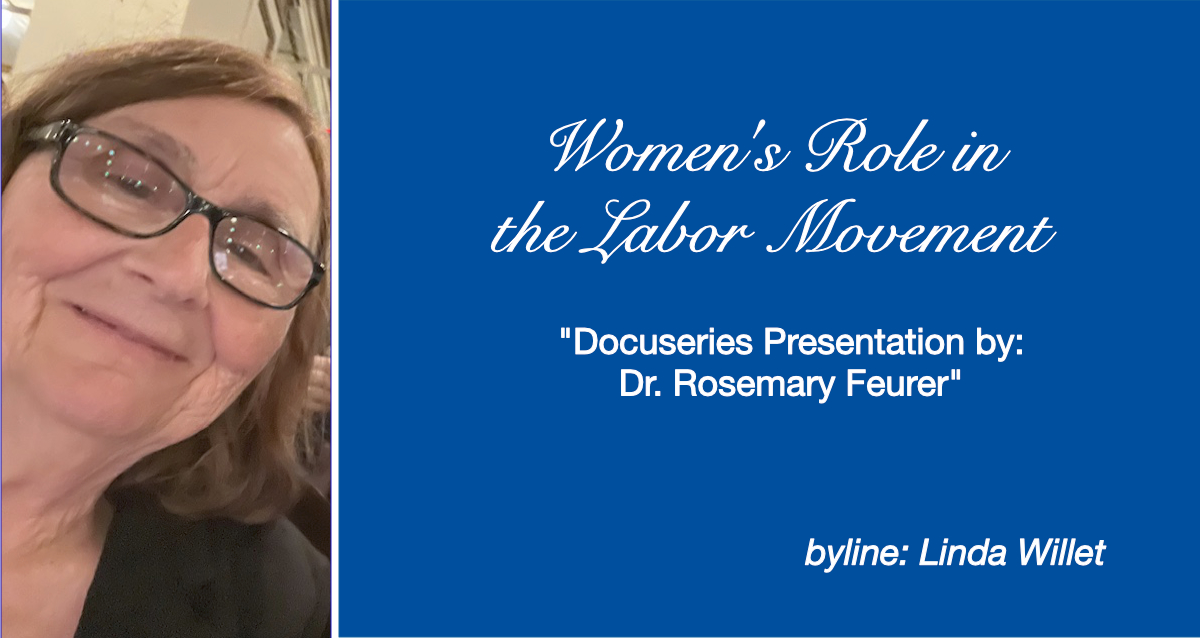Women have had a significant impact on the labor movement throughout the history of this nation, but their contributions were not always valued in the past and sometimes are not valued today. On May 31st, Dr. Rosemary Feurer from Northern Illinois University began her presentation at the KCDW forum “Women in the Labor Movement” by asking the audience a question: “Do you produce wealth?” Some of the attendees hesitated to raise their hands because they are retired. Others are not working at a paying job. Surprisingly, Dr. Feurer stated that fewer students in her classes now raise their hands than students in the past did. The problem doesn’t lie with the work that each of us does. Instead, it lies with the definition of “producing wealth,” which was created by capitalism. The traditional definition is that the company makes a profit after meeting payroll and other expenses. The labor of employees produces wealth.

Propaganda has labeled jobs that women often do as not “producing wealth.” This includes caretaker jobs such as taking care of the elderly and children. Some people classify paid positions such as teachers, counselors, and social workers in the same category because a product was not produced. And nonprofit jobs might also be seen as not producing wealth. Dr. Feurer pointed out that work that is both paid and unpaid produces wealth.
From the beginning of this country, women were a source of unpaid reproductive labor. They were expected to produce workers to work in the fields when America was primarily an agricultural nation. At the same time, they took care of older members of the family who could no longer work. And when America moved into the Industrial Revolution, factories hired entire families with young children working at age 9 and above. The mother stayed home and took care of younger children and was also expected to produce more children. It’s surprising to realize that this viewpoint still exists, but the U.S. currently has a declining birthrate and workforce. The Trump administration has been discussing ways to motivate women to stay home and have children, including paying women a $5,000 bonus when they give birth.

In a previous newsletter, we discussed the controlled and regimented lives of young farm girls who left the family farm in the 19th century and worked in the mills in Lowell, Massachusetts. In 1846, Sarah Bagley, a 30-year-old worker began to speak out for both female and male workers at Lowell. She edited a labor newspaper and advocated for a 10-hour work day. Although she had some success when the millowners agreed to an 11-hour workday, she was frustrated that the owners did not want to budge on anything else. Although workers in the U.S. organized more strikes than workers in other countries, there was little progress because immigrants were willing to take jobs under any conditions.
The AFL-CIO was formed in 1886 and focused on representing skilled workers. Often women, minorities, and unskilled workers were not allowed to join. However, in some cases, the AFL set up separate women’s auxiliaries that dealt with specific issues. The coal miners who were part of the United Mineworkers of America had a different attitude. They involved everyone in their fight for better working conditions, and their fiercest advocate Mary Harris Jones, also known as Mother Jones, used the same strategy. Throughout the 1890s, Mother Jones delivered powerful speeches and stood on the picket lines with miners and workers in other industries. In 1897, the UMW hired her to be a union organizer. Mother Jones insisted that everyone, including minorities, women, and children be a part of the protests and strikes. She was arrested many times and carried a pistol for protection. She was fearless but advocated for safety.
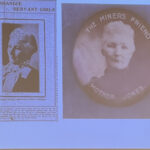
Mary agonized over the 20 deaths that occurred at Ludlow, Colorado, on April 20, 1914. She was held prisoner in a hospital in Colorado at the time, but she had been involved in organizing and advocating for the Ludlow miners who set up a tent colony near the mines. The Colorado National Guard and company guards opened fire on the tents and later poured gasoline on them. Men, women, and children were killed. Mary testified before Congress about the event and brought the plight of the workers and their families before the nation. Her testimony led to a meeting with John D. Rockefeller, Jr., who owned the mines and finally agreed to make the reforms needed.
Mother Jones is buried in the Union Miner Cemetery in Mount Olive, Illinois, beside miners who were killed violently during the Virden strike. She considered these miners “her boys” and asked to be buried there after speaking at an event to celebrate their lives. This is the only union-owned cemetery in the U.S., and October 11 is known in Mt. Olive as Miner’s Day and Mother Jones’s Day.
The fight for fair wages and equal rights continues today. In 1983, public employees in Illinois won the right to strike under certain circumstances when Governor Jim Thompson signed a collective bargaining bill after Elgin teachers were arrested for striking for higher pay and rights.
